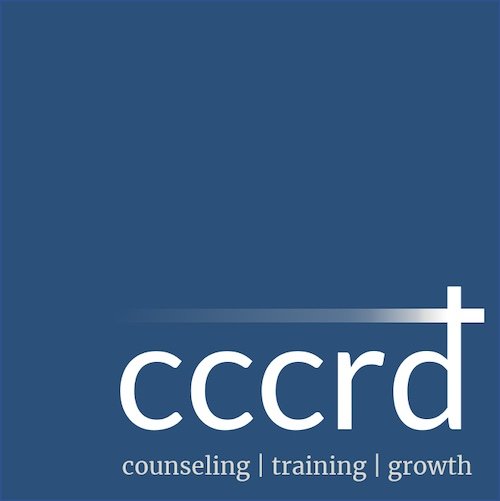What Is Psychodynamic Counseling?
Have you ever left a conversation feeling like the world makes sense?
Maybe you went to a friend with a dilemma you’re facing at work, or you discussed with your partner why something your father said was hurtful. If the friend or partner was attentive and curious, if you were honest and reflective, and if the stars aligned just right, you may have left that conversation thinking, “Wow, I understand this so much more. This is easier to hold in my heart.”
At CCCRD, many of our counselors practice psychodynamic counseling (also referred to as insight-oriented counseling). This means that our theory and practice seek to develop self-knowledge, along with greater knowledge of others and of God. It means we believe insight into our hearts gives us a good start toward producing real change in them.
Some Context on Therapy Modalities
There are lots of different forms of therapy out there, from cognitive-behavioral therapy to narrative therapy to biblical counseling and many, many more. These disciplines developed in various branches as people attempted to understand and help other people live healthy, fulfilling lives.
Not all therapy looks the same. Some forms of therapy (also called modalities) work better for certain issues and populations; change those factors, and a different modality may be more effective.
Just as different forms of therapy work for different mental health challenges, different therapists prefer to utilize different modalities. For many counselors here at CCCRD, that preferred model is psychodynamic or insight-oriented.
Characteristics of Insight-Oriented Counseling
What does psychodynamic counseling look like? Here are a few things to know:
1. Increasing Introspection and Awareness
Insight-oriented counselors are skilled in fostering deeper reflection and looking inward. Those in the psychology world know this as the “unconscious”—the things going on inside us that we are not consciously aware of. Psychodynamic counselors believe that the internal world (thoughts, emotions, deeply held longings) are not random or arbitrary; rather, they show what’s going on in a person. By understanding oneself more fully—by moving things from the unconscious to the conscious—a person may begin to see a new way of interacting with the problems they are facing.
2. Examining Past and Present Experiences
Some modalities focus primarily on the present and place a lower value on past experiences. This can be very effective, particularly for those who have difficulties with daily functioning or if the past is too overwhelmingly difficult to look at. But for insight-oriented counseling, a lot of focus and attention goes into one’s experience, including (or especially) the past.
The stories of our lives say so much about the people we are in the present. It is in the lived experience, from birth to adulthood, that we develop and discover our interests, opinions, convictions, longings, and wounds. Showing the courage to take a good, long look at the past, particularly early childhood and other stages of development, displays how we got to where we are and gives us clues to how we can alter what ails us.
3. Dealing with Reality
Part of the goal of psychodynamic therapy is to help the client deal with life as it really is. So often, we try to avoid the difficult realities of life, pushing the resulting emotions into the unconscious. And yet, though we try to avoid them, insight-oriented therapists believe these emotions will show themselves in one way or another.
Maybe the sad and lonely person becomes furious when someone attempts to get close to them. Maybe the person who hates their father has disliked every one of their bosses. From a psychodynamic point of view, the person is avoiding these unconscious forces—they are not dealing with reality as it truly is.
Therefore, a goal of insight-oriented counseling is to develop a person’s ability to look life in the face. This is sometimes referred to as “ego strength”—a person’s ability to function reasonably and appropriately in response to whatever life holds. The therapist plays the role of supporter, observer, and guide, inviting and strengthening the person for what is going on in their life.
4. Interpreting Symptoms
“Interpreting” symptoms means showing curiosity and creative thinking about them. What are my symptoms showing me about my life? What are they accomplishing? What are they protecting me from? If we are curious about the challenges we face, dark and difficult as they might be, they can give us some glimpse at what help can look like.
5. Using Metaphors
Metaphors are important for two reasons: they are tools for insight and provide a framework for growth and change.
Metaphors give us a way to express the things we can’t otherwise put into words. They put language to internal experiences so we can begin to engage them. They can both explain what we have gone through in the past and help us express what’s going on in the present. In other words, they help give us insight.
Similarly, metaphors give us a way to affect our hearts. A well-utilized metaphor will help us understand our story and internal world better. Then, it can show us how to move forward to a healthier, more fulfilling life.
6. Developing a Healthy Relationship with the Counselor
It’s worth noting that this is emphasized in essentially all modern therapies, but it is very important in insight-oriented counseling.
An effective counselor will practice curiosity, compassion, presence, and attunement to their client’s experience. When this is done effectively, a strong counselor-counselee team can form. This is referred to as the “therapeutic alliance”: the client and the counselor are allies in their attempt to help the client grow.
A strong therapeutic alliance can both stem from and encourage the work of psychodynamic counseling. For example, a counselor’s deep understanding of a client’s internal world may draw out incredible insight the client has never considered. Or, this patient and dependable relationship might provide a safe enough space to face things we didn’t think we ever could. Such a back-and-forth in the alliance can have numerous and profound positive benefits and is therefore an essential part of therapy.
Conclusion
Insight-oriented or psychodynamic counseling is one among many kinds of therapy, and each has its own merit. However, in our work at CCCRD, many of us utilize insight-oriented therapy because we seek to encourage more than “symptom-reduction” in therapy; we hope to accomplish deeper internal work that leads to the heart change we believe can happen. We believe clients can leave our work thinking, “My world makes a bit more sense to me, and I feel like I can manage it.”
Interested in what therapy can offer you?

